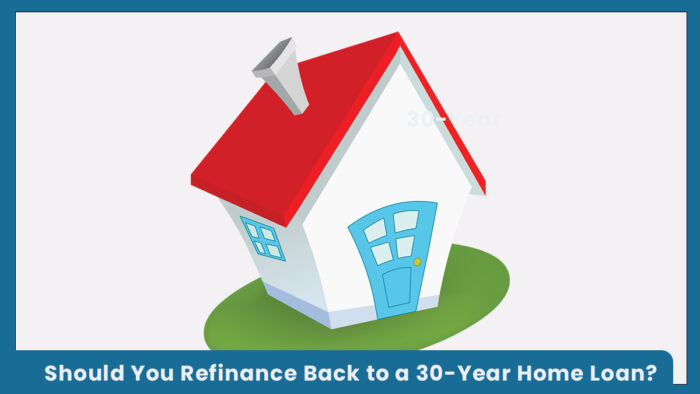Should You Refinance Back to a 30-Year Home Loan? – Refinancing your 30-year mortgage is most often done to lower your interest rate. By doing so, you will reduce both your monthly payment and the total amount of interest paid over the life of the loan.

Another common reason for refinancing is a cash-out refinance, which allows you to access your home’s equity. This can help pay for home improvements, eliminate credit card debt, or cover emergency expenses.
Why Should You Refinance Back to a 30-Year Home Loan?
Should You Refinance Back to a 30-Year Home Loan? When refinancing a 30-year mortgage you have the chance to choose a new repayment timeline that matches your financial needs. This might mean continuing with the number of years you have left. So, if you’ve already paid for five years, you could refinance into a 25-year loan.
You can also shorten your loan term to pay it off faster. For instance, changing from 25 years to 20 can help you save a significant amount on interest, especially if you qualify for a lower rate. Just remember that your monthly payments might be higher. If you’re more focused on lowering your monthly costs, restarting with a new 30-year term is an option. While it gives you some breathing room now, you’ll likely end up paying more interest over the life of the loan.
Advantages of Refinancing to a 30-Year Loan
- More flexibility: A 30-year loan gives you room to adjust your payments. You can make extra payments when you have the funds and stick to the minimum when things are tight. This helps you pay off your mortgage sooner if you want, without the pressure of a higher fixed monthly amount. Just confirm with your lender that extra payments go toward your loan’s principal.
- Lower monthly payments: Extending your loan to 30 years typically gives you the smallest monthly payment. Even though shorter terms can still lower your monthly cost, a 30-year loan usually offers the most budget-friendly option month-to-month.
- Debt consolidation: You can combine other debts, like student loans or credit cards, into one mortgage payment.
- Switching loan types: You can move from an adjustable-rate mortgage to a fixed-rate mortgage for more stability.
- Removing PMI: If you’ve built enough equity, you may be able to cancel private mortgage insurance and save on monthly costs.
Disadvantages of Refinancing to a 30-Year Loan
- More interest in the long run: Starting a new 30-year term means more payments over time, which leads to paying more interest overall. Even adding a few years to your current mortgage can increase your total cost by thousands of dollars.
- Higher interest rate: 30-year fixed loans often come with slightly higher rates compared to 15-year loans. That means you could end up paying more just because of the longer term, even if your monthly payment feels easier.
- Equity risk: Taking cash out reduces the amount of equity you have in your home, which can be risky if property values drop.
- Closing costs: Every refinance comes with fees, which can sometimes outweigh the benefits if you’re not staying in the home long term.
How often can you refinance your mortgage?
If you’ve already refinanced but want to do it again to get better terms, you’re not alone. The good news is that you can refinance as many times as you want, as long as it makes financial sense. Just keep in mind that each refinance comes with closing costs and fees. If you refinance too often, those extra expenses could eat up the savings. It’s smart to figure out your break-even point, which is when the money you save equals the cost of refinancing.
If it’s your first time refinancing, check whether your loan has any timing rules. For example, FHA and VA loans usually require your current mortgage to be at least six months old before you can apply for a streamlined refinance, which typically requires less paperwork.
How to Refinance Into a 30-Year Mortgage
- Make a plan: Know why you’re refinancing. Whether you want to lower your monthly payment, shorten your loan term, or access home equity, having a clear goal will help you choose the right option.
- Check your credit score: Your credit score affects the rates you can get. The higher your score, the better the refinance options. A score of 740 or above typically qualifies for the best rates. If necessary, take a few months to improve your score before applying.
- Shop around: Don’t settle for the first offer you get. Compare rates from multiple lenders to find the best deal. It can save you thousands in the long run.
- Compare all aspects of the deal: The interest rate is important, but it’s not the only factor. Consider additional costs such as closing fees and points, which can affect the total cost of refinancing.
Before refinancing, it’s important to clarify your goals. Do you want to lower your payment or pay off your loan faster? Keep in mind that refinancing usually makes sense if you plan to stay in your home for several more years, as it can take time to break even on the refinancing costs.



